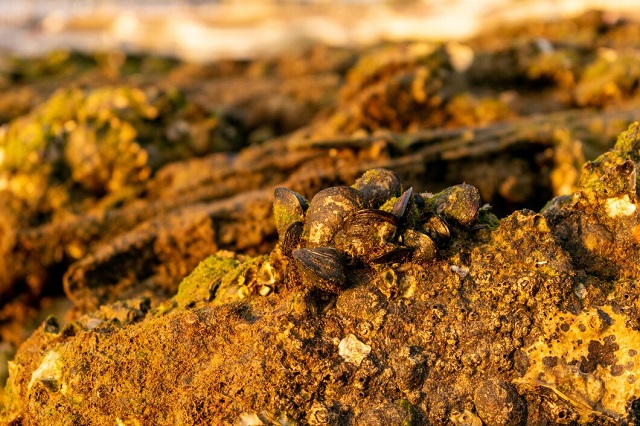
Metal detecting is a fun hobby that mixes history, adventure, and the excitement of finding something new. It's important to know how to tell different metals apart, especially gold. Gold can be hard to spot because it sounds similar to other metals. In this article, we'll show you how to tell gold from other metals. This will help you get better at detecting and maybe even find some treasure.
Understanding How Metal Detectors Work
First, let's learn how metal detectors work. They send out electromagnetic fields that find metal objects underground. When they find something, they send a signal based on the metal's type and size.
Gold is a special metal that doesn't have iron in it. It usually shows up with lower signals than metals like silver or copper. But, gold signals can look like those from other metals, like aluminum or lead. This makes it hard to tell them apart.
To learn more about how metal detectors find gold, check out this link.
Techniques to Distinguish Gold from Other Metals
1. Master Your Metal Detector’s Settings
One key way to spot gold is by knowing how to adjust your metal detector.
Sensitivity and Discrimination
- Sensitivity: Turning up the sensitivity can help find smaller gold nuggets. But, it might also pick up more junk.
- Discrimination: This setting helps block out unwanted metals. But, don't make it too high or you might miss small gold pieces.
Frequency Settings
- Lower frequencies are good for finding big, deep gold nuggets.
- Higher frequencies are better for spotting small gold flakes or jewelry.
2. Learn to Interpret Audio Signals
Good detectorists use audio signals to figure out what they've found. Gold usually sounds soft and mellow, unlike the sharp sounds of metals like aluminum or iron.
Practice with Test Samples
- Use known samples of gold, aluminum, iron, and other metals to get used to the sounds your detector makes.
- Listen for the signal's consistency and length. Gold signals are usually steady, while junk metals can sound erratic.
3. Understand Target Identification (TID) Numbers
Many metal detectors have Target Identification (TID) displays. These show numbers that match different metals.
Gold’s TID Range
- Gold usually has a specific TID range, depending on the detector and the gold's size. Small gold rings might show between 10-20, while big nuggets could have higher numbers.
- Compare these numbers to trash metals like aluminum (usually 40-60) to avoid mistakes.
4. Consider the Size and Shape of the Target
Gold objects, especially nuggets, often have weird shapes and sizes. This can change how they show up on your detector.
Depth and Signal Strength
- Smaller gold pieces might have weaker signals, while bigger nuggets will have stronger, more steady readings.
- Use a pinpointer to find the exact spot of the target and guess its size.
5. Research and Choose the Right Locations
Finding gold means knowing where to look. Gold often hides in certain places, like:
- Rivers and Streams: Placer gold settles in waterways where erosion brings it down.
- Old Mining Sites: Places with gold mining history are great for finding gold.
- Beaches and Parks: Lost gold jewelry makes these spots perfect for detectorists.
For more tips on finding the best spots and improving your skills, check out relicseek.com.

Common Mistakes to Avoid
1. Over-Reliance on Discrimination
Discrimination helps filter out trash, but don't set it too high. This might miss small gold targets. Always check signals, especially in gold-rich areas.
2. Ignoring Ground Conditions
Soil with minerals or high conductivity can mess with your detector. Adjust your settings and use a ground-balancing feature if you can.
3. Lack of Patience
Gold detecting needs patience and persistence. Don't get down by trash metals. Every signal is a chance to learn and get better.
Advanced Tips for Gold Detection
1. Use a Gold-Specific Detector
For serious gold prospecting, get a detector made for gold. These are best for finding gold in mineralized soils.
2. Combine Techniques
Use audio signals, TID numbers, and visual cues to confirm gold. The more info you get, the better your chances.
3. Join a Community
Connecting with other detectorists is valuable. Online forums, local clubs, and social media groups are great for sharing and learning.
Conclusion
Learning to spot gold takes time and practice. Mastering your detector, understanding its settings, and choosing the right spots can help. Remember, patience and persistence are key. Every piece of trash you find brings you closer to finding gold.
Share this Post
Sapporo Snow Festival (Yuki Matsuri)This exuberant celebration of snow and ice has been held since 1950 in Sapporo, the capital city Hokkaido. The week's activities feature a colorful parade and competitive events in winter sports, as well as a display of colossal snow sculptures along the main street and in Odori Park. The sculptures are spectacular—intricately carved and often several stories high. About three weeks before the festival, a wooden frame is built and packed with snow; after the snow has hardened the frame is removed and the carving begins. A different theme is chosen each year for the sculptures. More... |
|
Who can look down upon the grave even of an enemy, and not feel a compunctious throb, that he should ever have warred with the poor handful of earth that lies moldering before him?
Washington Irving (1783-1859) |







